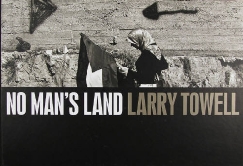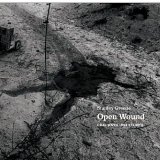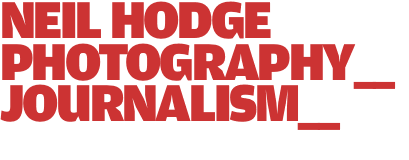Site created by Amplitude. |
||
No Man's Land review
No Man’s Land, Larry Towell – published by Chris Boot £50
Open Wound: Chechnya 1994-2003, Stanley Greene – published by Trolley £35
During the war in Bosnia over a decade ago, BBC correspondent Martin Bell famously implored reporters to embrace a “journalism of attachment” – a journalism that would not stand neutrally between right and wrong, good and evil – as opposed to “bystander journalism”, which simply reports events for the sake of “objectivity” and “balance”.
Sadly, with the notable exception of a few remarkable journalists who had long ago eschewed the concept of objectivity such as John Pilger, Paul Foot, and Robert Fisk, Bell’s appeal has largely been ignored by the media at large and still remains frowned upon by his former employer. Indeed, print and TV journalists continue to churn out stories that contain outright lies to reflect opposing opinions of any story for the sake of presenting an “objective” and “balanced” view.
Photojournalism, however, remains an area where those taking the pictures are not afraid to let the public know what their own feelings about the story are. Two recently published volumes of photo-essays leave the reader in no doubt that these photographers see the conflicts they are covering in terms of right and wrong.
Larry Towell’s compelling photo-essay No Man’s Land is a five-year documentary account of Gaza, the West Bank, and of the people who live there and endure daily conflict. Towell’s photographs not only feature the Israeli barrier that Ariel Sharon’s right-wing government is still intent on building despite international criticism, but also the psychological walls that divide Israelis and Palestinians.
While Towell says in his afterword that he is optimistic that there will eventually be a two-state solution, his book indicates a much bleaker future. His photographs are a catalogue of violence, hatred and alienation. The book begins with a picture of a group of young, masked Palestinian boys arming themselves with petrol bombs behind a wall: it ends with a series of photos of door handles and locks from destroyed Palestinian houses. In between, there are over 100 images showing children armed with rocks and slingshots, tanks rolling through ancient city streets, armed soldiers, debris, rubble, death, destruction and grief.
There is little doubt where Towell’s sympathies lie: it is with the Palestinians, who are portrayed throughout living in debris-strewn streets and bullet-riddled houses, whereas the Israelis, – living just a few miles away – are able to walk serenely through snow-lined cobbled streets. As Towell says: “The little that remains of Palestinian land has been cut to ribbons by a military infrastructure of settlement roads, checkpoints, watch-towers, and security gates…By granting Israel enough political immunity to flout international law, the US has helped turn it into a pariah, condemned by the world community.”
Open Wound, Stanley Greene’s photographic account of Russia’s war in Chechnya, also leaves readers with the strong impression that there is little immediate hope of peace in the region following a bloody eleven-year war (and counting) and a 150-year struggle for autonomy and independence. Like Israel, Russia has continued to flout international law and turn a deaf ear to international criticism of the country’s conduct of the war and its reasons supporting invasion.
Dedicated to those journalists that have been killed covering the conflict, Greene’s black and white photographs are unsparingly grim. Indeed, one of the volume’s first images is of an empty noose hanging in a deserted, bombed-out street. While Greene shows us intimate portraits of civilians killed by Russian shelling, the pictures that work best in embodying the destructiveness and insanity of all wars are those that provide a longer term view of the conflict, namely those pictures describing what is happening to the civilian population. Greene shows us a child sitting in his bedroom with artificial legs; a family forced to live in a filthy metal Red Cross wagon; and a deranged man standing outside his house covering himself from Russian bombing with a chair over his head.
Like Towell, Greene also makes no effort to disguise what his personal views on the conflict are. In an end note to the book, Greene writes that “journalists become attached to conflicts and their revolt against injustice colours their writing, their photographs and their films. At a certain point we have to get off the fence. We are not disaster tourists. When we see atrocities being committed under our eyes we have to fight back. I use my cameras as weapons and try to portray the human story in this dirty war. Photographs should be beyond politics.”
Ultimately, Towell and Greene’s photographs leave us with a sour taste in our mouths. Not only do they document the grim and loathsome aspects of conflict, but they also make us ask the question: what prevents print and TV journalists from showing the same level of attachment in their reporting? Answers on a postcard, please.
“While Towell says in his afterword that he is optimistic that there will eventually be a two-state solution, his book indicates a much bleaker future. His photographs are a catalogue of violence, hatred and alienation”


"Stanley Greene’s photographic account of Russia’s war in Chechnya leaves readers with the strong impression that there is little immediate hope of peace in the region"
